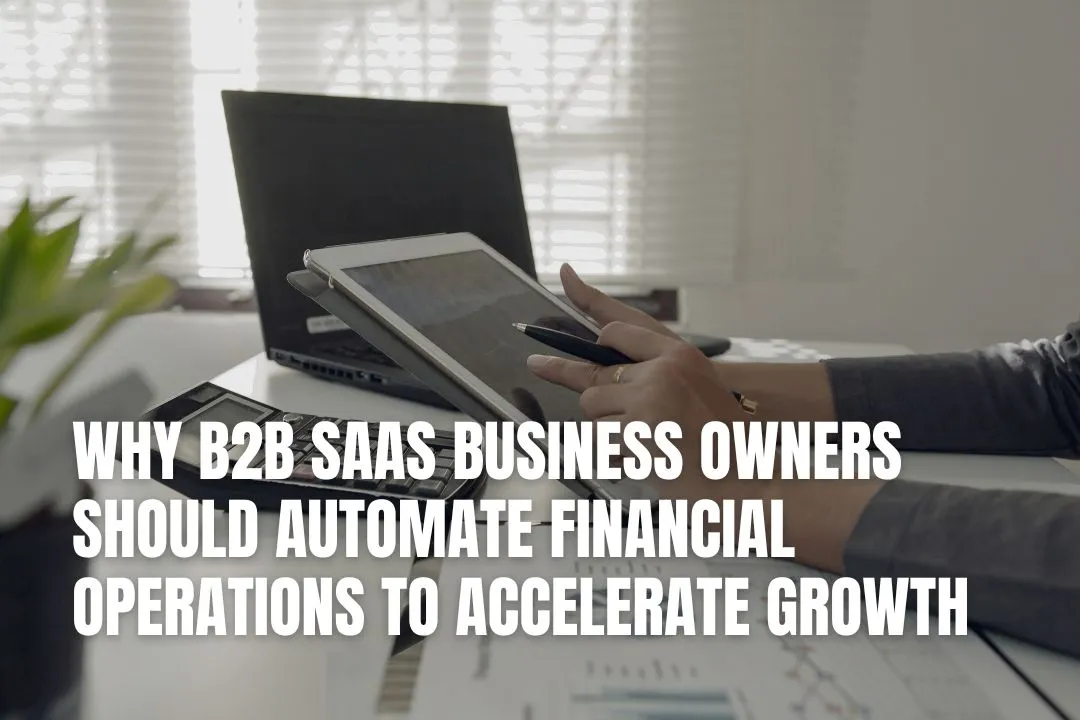
In the B2B SaaS industry, speed and precision in financial operations are as critical as product innovation. The companies that scale fastest are not necessarily those with the biggest sales teams. They’re the ones that have built a financial foundation designed for growth.
Yet for many SaaS businesses, finance remains stuck in manual mode. Teams spend hours reconciling invoices, managing spreadsheets, and tracking renewals by hand. These inefficiencies distort reporting accuracy and slow decision-making at the very moments when agility matters most.
The real growth advantage lies in integrating financial automation into the core of your operations. In this post, we’ll explore why automating financial operations is essential for B2B SaaS success. Let’s get started.
B2B SaaS companies deal with a high volume of recurring transactions. These include subscriptions, renewals, upgrades, downgrades, and usage-based pricing models. Managing these processes manually might work for the first few customers, but as your client base expands, complexity rises exponentially.
Think about the impact on billing cycles alone. You can’t handle multiple contract terms, billing frequencies, and currencies without automation. It leads to delays, inconsistent invoicing, and cash flow gaps. The result? Finance teams spend valuable time trying to reconcile accounts instead of mapping out revenue strategies.
Top recurring billing software, such as Younium and its competitors, can automate these workflows to ensure billing accuracy, timely renewals, and adjustments for customer changes. It provides a scalable framework that grows with your business.
Collecting data manually using spreadsheets slows down critical financial insights. Executives may wait days or weeks for updated metrics, making it difficult to make timely decisions on pricing, resource allocation, or expansion.
However, financial automation platforms centralize all revenue-related data in real time. They offer dashboards that track metrics, including MRR (Monthly Recurring Revenue), ARR (Annual Recurring Revenue), churn rate, LTV (Lifetime Value), and CAC (Customer Acquisition Cost).
With accurate and current data, CFOs can identify performance trends early, forecast cash flow more reliably, and optimize spend across departments. This level of financial visibility gives SaaS leaders the confidence to make bold, data-backed growth decisions, such as entering new markets or adjusting subscription tiers based on customer usage behavior.
As your B2B SaaS company expands globally, compliance with accounting standards like ASC 606 and IFRS 15 becomes crucial. Doing it manually is both labor-intensive and error-prone, leading to over- or under-stating revenue recognition or delays during audits.
Automated financial systems systematically apply the correct revenue recognition rules for each contract type, ensuring accurate, real-time accounting. They maintain detailed audit trails, provide transparent documentation, and reduce the risk of financial discrepancies.
This automation safeguards your company’s reputation and reduces the time and cost associated with external audits.
Every hour your finance team spends reconciling data, creating invoices, or generating reports is an hour not spent on strategic analysis or growth planning. Manual financial processes can lead to duplicate entries and missed renewals, all of which directly affect profitability.
Automation minimizes these inefficiencies, as systems handle repetitive tasks based on your defined rules. As a result, your team can redirect its efforts toward higher-value initiatives such as forecasting, performance analysis, and strategic partnerships.
Over time, you’d have saved the business a lot of money. Now that’s because, instead of hiring additional staff to manage your finances, automation allows your current team to handle larger volumes efficiently and accurately.
Recurring revenue models demand meticulous oversight of customer lifecycles from onboarding to renewal. But manual methods don’t work when accounting for subscription adjustments like upgrades or discounts.
That’s why you need a tool that manages subscriptions. According to the Attrock expert, top user-friendly B2B SaaS software can automate the subscription and revenue recording process.
They reflect every subscription change in invoices, revenue recognition schedules, and forecasts. This automation can improve retention, reduce churn, and help you predict revenue growth.
Finally, automation enhances strategic agility. When your financial data is accurate and up to date, stakeholders can quickly capture new opportunities. For instance, real-time insights into cash flow and profitability can inform whether it’s the right time to launch a new product tier, expand geographically, or adjust pricing models.
Automated forecasts also make it easier to attract investors by demonstrating disciplined, data-driven financial management. With financial operations running smoothly, you can focus on scaling customer acquisition and improving product value.
Automating your B2B SaaS financial operations is a fundamental requirement for sustainable growth. It eliminates manual inefficiencies, improves compliance, and gives you real-time data visibity. In fact, automation empowers you to scale strategically.
So, if you’re yet to subscribe to an SaaS finance tool, it’s time to adopt a solution that fits your business model. Most of these tools offer a free trial or demo, allowing you to see how they work before committing your money.
You should consider automating your financial operations as soon as manual processes start to feel cumbersome. If your team is spending significant time on spreadsheets to manage subscriptions or if billing errors are becoming more frequent, it’s a clear sign to adopt an automated solution.
Automation provides real-time dashboards for key SaaS metrics that are vital for growth. These include Monthly Recurring Revenue (MRR), Annual Recurring Revenue (ARR), customer churn rate, Lifetime Value (LTV), and Customer Acquisition Cost (CAC).
Yes, absolutely. Automation reduces the hours your team spends on repetitive manual tasks and minimises costly human errors. This means your current team can manage a larger volume of work efficiently, saving you from hiring additional staff purely for financial administration.
Investors look for businesses with disciplined, data-driven financial management. Automated systems provide clean, accurate, and easily accessible financial reports and forecasts. This demonstrates a high level of control and strategic foresight, making your business a more attractive investment.
Most modern financial automation platforms are designed to be user-friendly. While an expert from a consultancy like Robinwaite can help you optimise your setup, your existing finance team can typically manage the day-to-day operations without needing extensive technical skills.